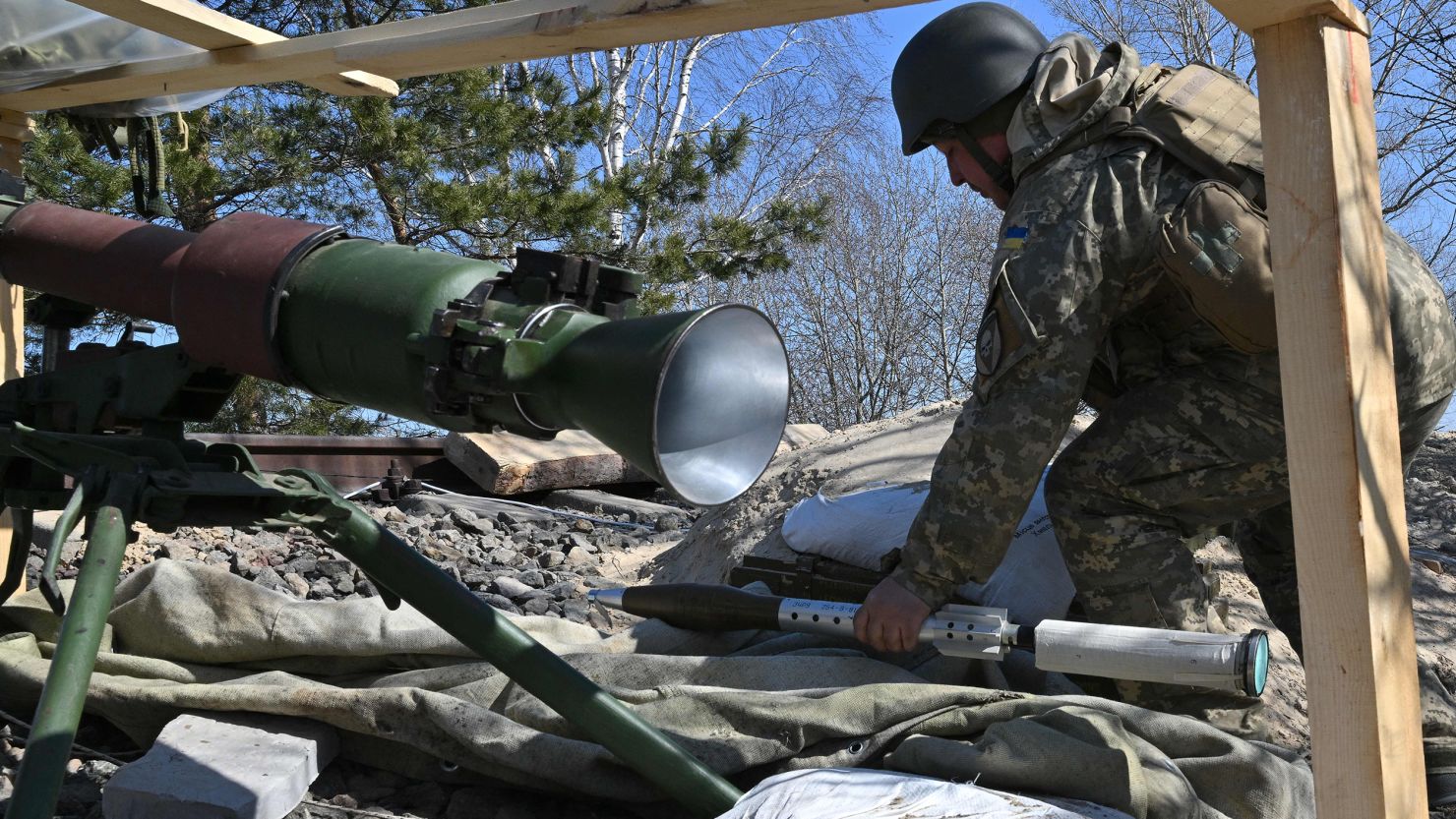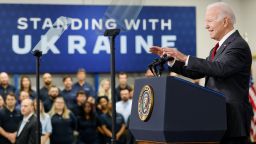The US intelligence community is carrying out a sweeping internal review of how it assesses the fighting power of foreign militaries amid mounting pressure from key lawmakers on Capitol Hill who say officials have failed twice in one year on the two major foreign policy crises faced by the Biden administration in Ukraine and Afghanistan.
The Senate Intelligence Committee on Tuesday sent a classified letter to the Office of the Director of National Intelligence, the Defense Department and the CIA pointing out that the agencies broadly underestimated how long the Ukrainian military would be able to fend off Russian forces and overestimated how long Afghan fighters would hold out against the Taliban last summer after the US withdrawal from the country, multiple sources familiar with the matter tell CNN. They questioned the methodology behind the intelligence community’s assessments, and the underlying assumptions behind them, the sources said.
CNN has learned that one smaller intelligence agency within the State Department did more accurately assess the Ukrainian military’s capability to resist Russia. But while that assessment was shared within the US government, it did not override the wider intelligence community’s predictions.
Critics say the US might have moved to arm Ukraine sooner and with heavier weaponry if the intelligence community had assessed that it stood a fighting chance against the Russian army. In the days leading up to the war, the intelligence community told policymakers that Kyiv would likely fall within three to four days of a Russian invasion.
“I think there was a major issue that we missed that had a significant influence on how this has unfolded. And had we had a better handle on the prediction, we could’ve done more to assist the Ukrainians earlier,” Sen. Angus King, an independent of Maine, said during a tense exchange with a top defense intelligence official in a public hearing on Tuesday.
Taken together, the review and the push from Capitol Hill suggest a widespread acknowledgment within the US government that the intelligence community needs to reassess how it judges the strength of other nation’s militaries – and underscore how high the stakes are when officials miss the mark.
“In this case, where you are making an assessment more or less in the present of something that turned out to be pretty dramatically wrong – that’s a good reason to do a serious postmortem,” said Greg Treverton, a former chairman of the National Intelligence Council under President Barack Obama.
In Ukraine, officials broadly believe that the intelligence community gave too much weight to Russia’s conventional military advantages and failed to account for how important Ukraine’s will to fight would be to the conflict.
Only one intelligence agency appears to have accurately predicted that the Ukrainian resistance would be far more effective than most believed, multiple people familiar with the assessments told CNN: the State Department’s intelligence arm, the Bureau of Intelligence and Research. The department’s intelligence directorate was also the lead dissenting voice in 2002, when the majority of US intelligence agencies assessed wrongly that Iraq possessed weapons of mass destruction prior to the Iraq war in 2003 – widely regarded as a catastrophic foreign policy blunder.
A senior State Department official told CNN that one tool driving the department’s high confidence in a Ukrainian resistance campaign was basic opinion polling: analysts reviewed a steady stream of public polls, particularly from eastern Ukraine, throughout the fall of 2021 and into 2022 that showed growing anti-Russian sentiment, the official said, and a growing Ukrainian willingness to engage in armed combat.
Other intelligence agencies, meanwhile, had largely focused on how dramatically outgunned Ukraine was by the Russian military. On paper, Russia had an overwhelming advantage in terms of weaponry, equipment and manpower.
No one, it appears, anticipated how poorly Russia would execute their initial campaign. Despite being more optimistic about Ukraine’s effectiveness, the State Department’s intelligence arm also overestimated Russia’s military capabilities, the official said. Defense Intelligence Agency Lt. Gen. Scott Berrier said during the public hearing on Tuesday that the two-month-old conflict is now in “a bit of a stalemate.”
The intelligence community has been widely praised for the accuracy of its insights into Russian planning leading up to the invasion. But its ability to predict the unknowable – in this case, how the war would play out once Russian and Ukrainian troops began fighting – has historically been spotty. So-called “will to fight” is among the most difficult intangibles for intelligence to predict, former officials say, and it has failed time and again: in Vietnam, in Iraq, and now, in Afghanistan and Ukraine.
The intelligence community’s review, which predates the letter from the Senate committee, is using Ukraine and Afghanistan as case studies to try to better understand what indicators officials should be using to predict how successful a foreign military will be when faced with enemy fire.
“I would say that it’s a combination of will to fight and capacity,” Director of National Intelligence Avril Haines said during the public hearing on Tuesday. “The two of them are issues that are … quite challenging to provide effective analysis on and we’re looking at different methodologies for doing so.”
How they got it wrong
Intelligence officials have defended their work in the lead-up to the war in Ukraine, arguing that the bulk of their predictions were accurate and that the assessment that the Ukrainian military would collapse and Kyiv fall to Russia within a matter of days was justifiable based on the information available to the United States at the time – primarily data on the amount of manpower and equipment possessed by both militaries, and years of study of Russian military doctrine.
Russia surprised many US officials by appearing to ignore their own military doctrine, marching on Kyiv in a massive column without first softening the city with overwhelming airstrikes. It was an unpredictable opening move that senior intelligence officials have publicly attributed in part to a mistaken belief by Russia that it would be treated as a liberator by the local population.
Berrier, the Defense Intelligence Agency head, told lawmakers that because the Russians massively outgunned the Ukrainians at the outset of the conflict, “it was the thought of senior analysts that it wasn’t going to go very well for a variety of factors. But there was never an intelligence community assessment that said the Ukrainians lacked the will to fight.”
“Yeah, but there wasn’t an assessment that they did either,” King snapped back. “The assessment was Ukraine would be overrun in a matter of weeks. That was grossly wrong.”
The State Department’s more optimistic assessment of Ukraine’s capabilities was shared within the US government, the senior official said. And despite its relatively obscurity and size compared to the CIA, DIA and other better-known intelligence agencies, the Bureau of Intelligence and Research often bats above its weight in interagency discussions, current and former officials say.
“They get paid attention to because they’re good and they tend to be contrarian, which is also good,” Treverton said. “Often they’re contrarian and right.”
But just because an administration is presented with a given assessment does not mean that it will act on it.
In the case of Afghanistan, some intelligence assessments had held that the US-backed government in Kabul would be able to withstand the Taliban for at least a year, long enough for the US to complete its withdrawal and evacuation. But assessments varied within the intelligence community, with even some public Defense Department reports hinting that the US-backed Afghan military would be unlikely to hold together long in the face of Taliban attack, and it quickly became clear that the Biden administration had relied on the wrong assessments of fighting power. After the Taliban takeover of Kabul, President Joe Biden pinned the defeat in part on the collapse of the Afghan military – “sometimes without trying to fight.”
The administration had vowed to get the United States out of Afghanistan and it’s not clear that a better assessment of the Afghan army’s fighting power would have led the Biden administration to make dramatically different policy decisions. But some critics on Capitol Hill and elsewhere have argued that better predictions about how quickly the Taliban would overrun the US-backed Afghan military might have allowed the administration to engineer a less chaotic final departure. In reality, US audiences were shocked by images of desperate Afghans hanging off of the outside of departing C-17s and the death of 13 US service members in an ISIS suicide bombing at the airport.
Human factors
Current and former intelligence officials acknowledge that only looking at military “capabilities” leaves out the quintessentially human factors that could prove decisive. Assessing a population’s will to fight is an art, not a science, that defies purely data-driven analysis, the senior State Department official said. But, the official said, it is a key element to determining how successful a military will be in a fight.
“The basic challenge is, you can see what you can count: so you know something about the armaments they have and you can maybe see something about the training they have,” said Treverton.
“But the things that matter are all intangible,” he said. “You just don’t know how good they’re going to be and how willing they’re going to be to fight. I’ve never seen us have much by way of a good method for doing that.”
And in fact, it is a focus on softer political indicators that may have allowed the State Department to reach a more accurate conclusion in Ukraine that the military-focused Defense Department or the broader intelligence community, Treverton, the State Department official, and other sources suggested.
“The IC makes assessments based on what it collects. DOD makes assessments based on what it knows about militaries. But State has people who have spent entire careers on the ground, firing diplomatic relationships and so they understand the mentality of the people and the culture,” said one source familiar with the assessments.
“That matters when it comes to assessing resistance.”
The State Department official said that the department is well positioned to analyze “will to fight” given its inherent emphasis on cultural and historical context.
The combative exchange between King and Berrier hinted at deep-rooted concern amongst lawmakers that US intelligence is missing those key human indicators.
“All I’m saying is, the intelligence community needs to be able to do a better job on this issue,” King said.
“I think the intelligence community did a great job on this issue, senator. We will –,” Berrier replied.
King cut him off with a raised voice.
“General, how can you possibly say that when we were told explicitly Kyiv would fall in three days and Ukraine would fall in two weeks? You’re telling me that was accurate intelligence?”





